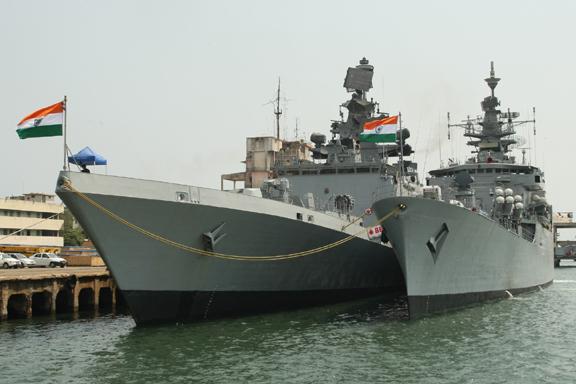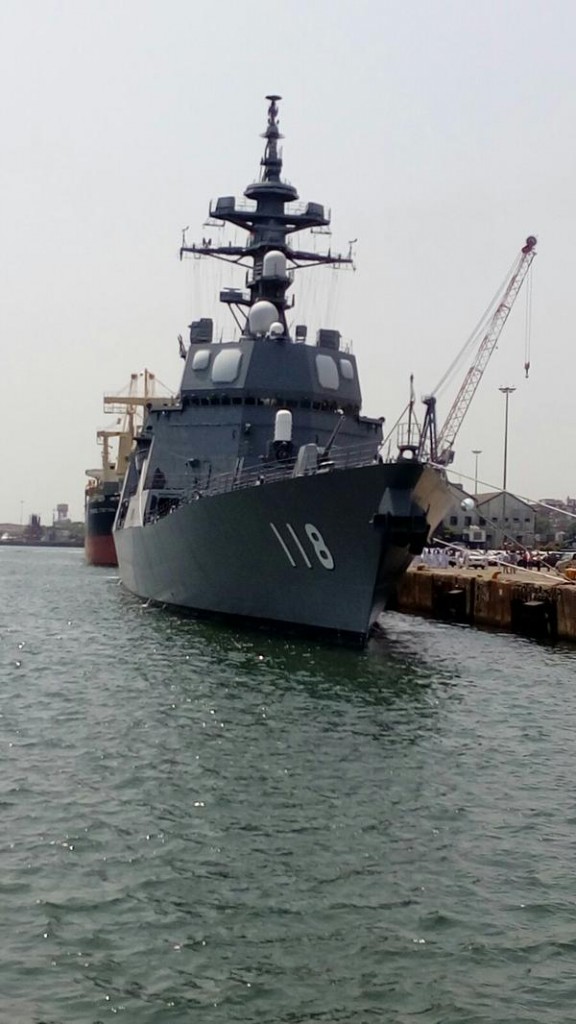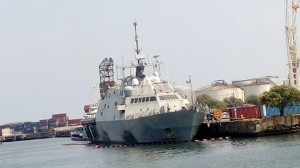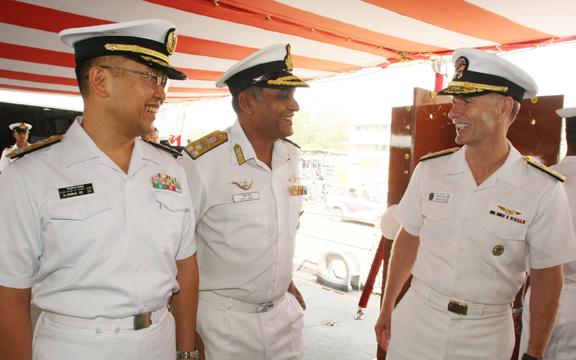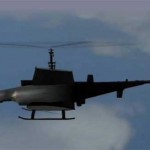Initiated in 1992, as a bilateral exercise between the Indian and US Navies, the scope, complexity of operations and level of participation has increased steadily in successive editions of the India-US Malabar Naval Exercise.
The 18th edition of the exercise was held in the Western Pacific in July 2014 in which Japanese Maritime Self Defense Force (JMSDF) was invited to participate.
MALABAR 2015, the 19th edition of the exercise, will be conducted in the Bay of Bengal from 14 -19 October 2015. Alongwith the Indian Navy and the US Naval Forces, JMSDF will also participate in the exercise.
The scope of MALABAR 2015 includes wide-ranging professional interactions during the Harbour Phase and a diverse range of operational activities at sea during the Sea Phase.
During MALABAR 2015, the Indian Navy will be represented by INS Shivalik an indigenous frigate, INS Ranvijay a guided missile destroyer, INS Betwa an indigenous frigate and INS Shakti, a Fleet Support Ship.
In addition, one Sindhugosh class submarine, INS Sindhudhvaj, Long Range Maritime Patrol Aircraft P8I and integral rotary wing helicopters are also scheduled to participate in the trilateral exercise.
The US Navy will be represented by the ships from Carrier Task Force (CTF) 70 of the USN 7th Fleet, which is based at Yokosuka, Japan.
The CTF will include the Nimitz class aircraft carrier USS Theodore Roosevelt, Ticonderoga class Cruiser USS Normandy and Freedom Class Littoral Combat ship USS Forth Worth.
In addition, one Los Angeles class nuclear powered submarine USS City of Corpus Christi, F18 Aircraft from US Carrier Air Wing and P8A Long Range Maritime Patrol Aircraft will also participate in the exercise.
The JMSDF will be represented by JS Fuyuzuki, a missile destroyer with SH 60K integral helicopter.
MALABAR 2015 is part of the process of enhancing naval cooperation among important navies of Indo-pacific regions which helps in enhancing mutual understanding. Sharing of best practices by the three navies will strengthen their respective capacities and help create better synergies for effective and speedy action to deal with challenges of disaster prevention and relief and maritime safety and security in the Indo-Pacific region, for the benefit of the global maritime community.




